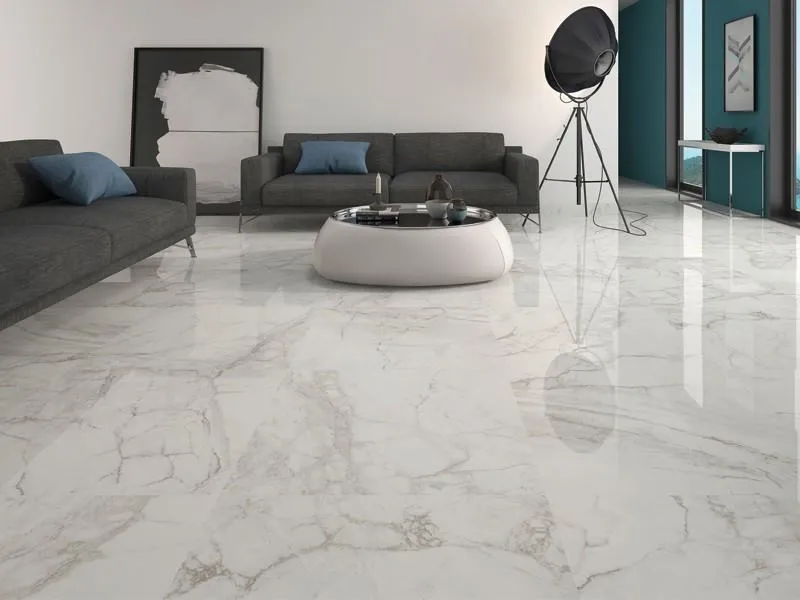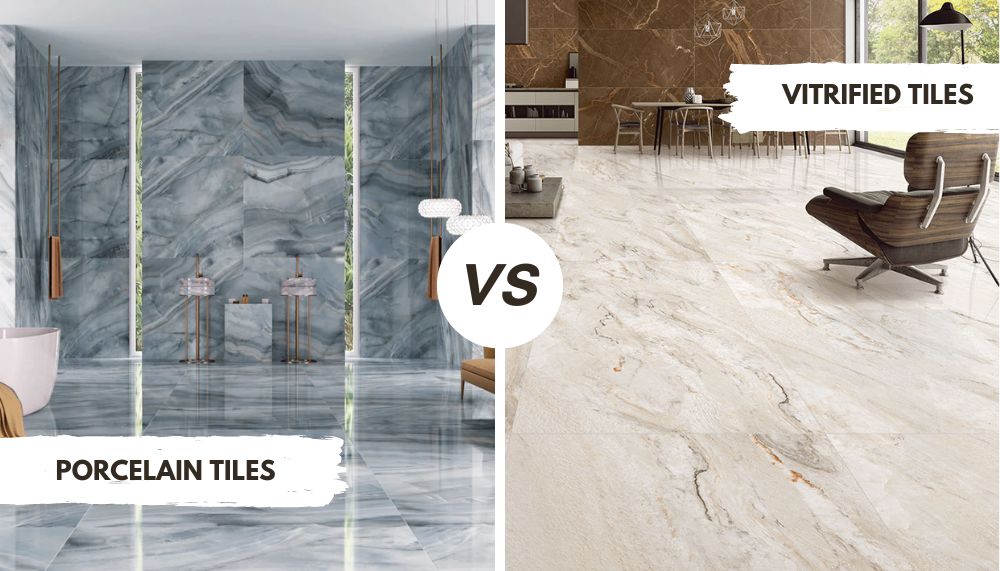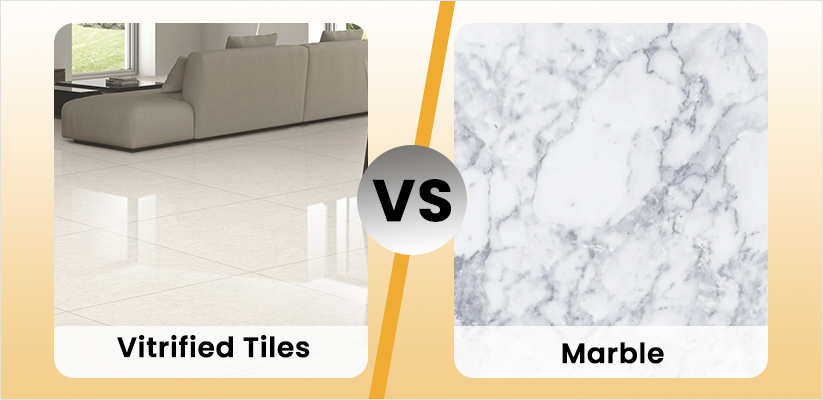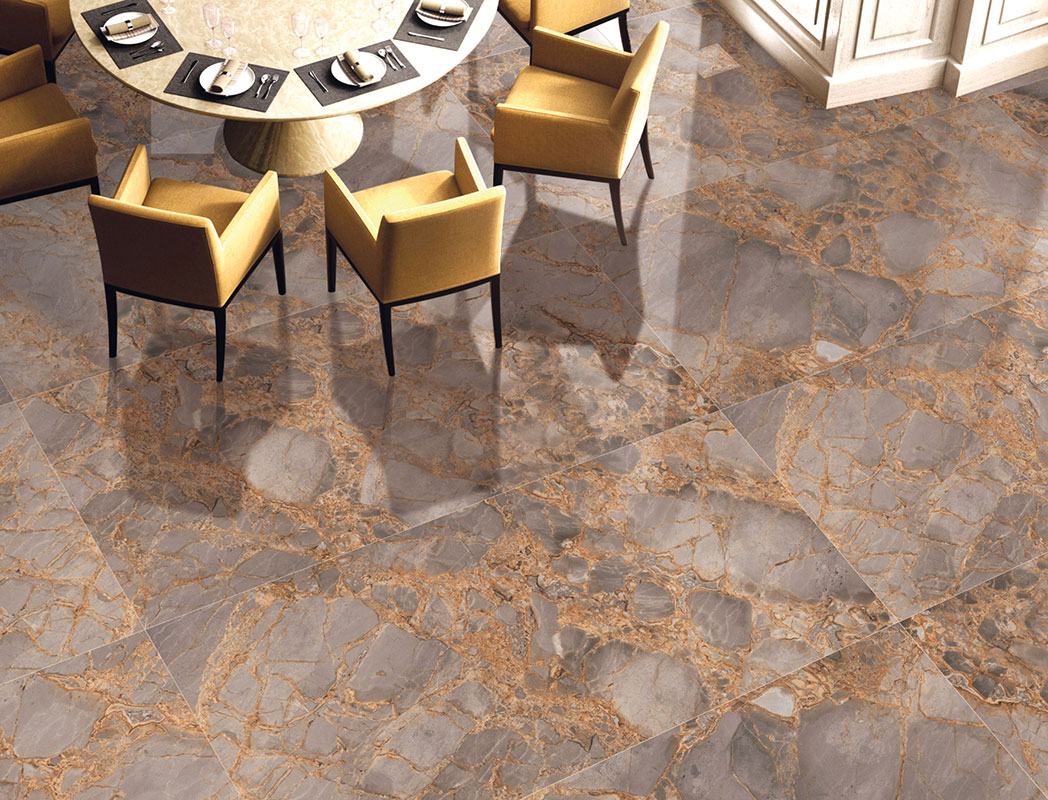Flooring is one of the most critical elements of home design. It determines not only the aesthetic appeal of your home but also its functionality and longevity. Among the wide array of flooring options available, vitrified tiles have gained immense popularity due to their durability, versatility, and polished finish. But are vitrified tiles the best choice for flooring? This blog delves into the world of vitrified tiles, covering their types, advantages, disadvantages, comparison with other materials, and even their relevance in Vastu Shastra.
What Are Vitrified Tiles?
Vitrified tiles are made by blending clay with silica, quartz, and feldspar, which are heated at high temperatures to create a non-porous, glass-like material. These tiles are known for their glossy finish, water resistance, and robustness, making them a favorite choice for both residential and commercial flooring.
Also Read:- Modirealty Vatvriksh Goregaon West – Brochure, Prons&Cons, PriceSheet
Types of Vitrified Tiles
Vitrified tiles come in various types, catering to diverse aesthetic and functional needs:
Double-Charged Vitrified Tiles

- Have two layers of pigment.
- Thicker and more durable than standard tiles.
- Ideal for high-traffic areas like living rooms or offices.
Full-Body Vitrified Tiles

- Pigment runs through the entire thickness of the tile.
- Extremely durable and scratch-resistant.
Glazed Vitrified Tiles (GVT)

- Feature a glazed surface for aesthetic appeal.
- Available in a wide range of colors and designs.
Polished Vitrified Tiles (PVT)

- Feature a polished surface for a glossy look.
- Best suited for areas that demand a premium finish, like showrooms.
How to Identify Ceramic and Vitrified Tiles?

It can be tricky to differentiate between ceramic and vitrified tiles, but here are some pointers:
- Material Composition: Vitrified tiles are made of silica and clay, whereas ceramic tiles primarily use natural clay.
- Surface: Vitrified tiles have a glossy, non-porous surface, while ceramic tiles often have a matte finish.
- Weight: Vitrified tiles are denser and heavier than ceramic tiles.
- Water Absorption: Ceramic tiles absorb more water, making vitrified tiles more suitable for moisture-prone areas like bathrooms and kitchens.
Also Read:- Best 30 Office Colour Combination: Vastu Tips | Trends 2025
Advantages of Vitrified Tiles
- Durability: Resistant to scratches, stains, and impacts, vitrified tiles are long-lasting.
- Low Maintenance: A simple mop is all you need to keep them clean.
- Aesthetic Versatility: Available in various designs, colors, and finishes.
- Water-resistant: Perfect for areas exposed to water, like kitchens and bathrooms.
- Cost-Effective: Offers a luxurious look at a fraction of the cost of materials like marble.
Disadvantages of Vitrified Tiles
- Slippery When Wet: The glossy surface can become slippery.
- Difficult to Repair: Cracks or damages are hard to fix without replacing the entire tile.
- Cost: While cheaper than marble, premium vitrified tiles like Kajaria vitrified tiles can still be expensive.
- Cold Underfoot: Not as comfortable as materials like wood or vinyl.
Vitrified Tiles vs. Ceramic Tiles
| Feature |
Vitrified Tiles |
Ceramic Tiles |
| Durability |
Highly durable |
Less durable
|
| Water Absorption |
Minimal |
Higher |
| Aesthetic Appeal |
Glossy and luxurious |
Earthy and natural |
| Cost |
Slightly expensive |
Affordable |
Vitrified Tiles vs. Porcelain Tiles

Porcelain tiles are a type of ceramic tile, but how do they compare to vitrified tiles?
- Water Resistance: Both are highly water-resistant.
- Durability: Vitrified tiles are slightly more robust.
- Price: Porcelain tiles are generally less expensive.
Vitrified Tiles vs. Marble Price

- Marble Flooring: Starts at ₹300 per sq. ft. and can go up to ₹2000 per sq. ft. depending on quality.
- Vitrified Tiles Price: Typically ranges from ₹60 to ₹200 per sq. ft. (Vitrified tiles 2×2 price is around ₹70–₹150 per sq. ft.).
While marble exudes elegance, vitrified tiles are more budget-friendly and easier to maintain.
Also Read:- Vastu for Shop Tips: East | West | North | South Facing Showrooms
Marble or Vitrified Tiles: Which Is Better?
- Choose marble if you want a timeless, luxurious feel and don’t mind maintenance.
- Opt for vitrified tiles for durability, affordability, and variety.
Colors and Vastu Compliance for Vitrified Tiles
Flooring colors play a vital role in Vastu Shastra:
- Color of Floor Tiles According to Vastu: Light shades like white, beige, or cream are considered auspicious.
- Bathroom Floor Tiles Colour as per Vastu: Use blue or green shades to harmonize water elements.
- Granite Flooring Vastu: Avoid black granite in the north or east direction as it may attract negativity.
Applications of Vitrified Tiles
- Living Rooms: Opt for polished vitrified tiles for a luxurious look.
- Bedrooms: Glazed vitrified tiles can add warmth and personality.
- Kitchens: Use double-charged vitrified tiles for durability.
- Bathrooms: Anti-skid vitrified tiles are a practical choice.
Advantages of Vitrified Tiles for Builder Floors
For builder floors, vitrified tiles provide a cost-effective yet premium finish. In compliance with Vastu for builder floors, light-colored vitrified tiles are preferred for their positive vibes and aesthetic appeal.
Also Read:- Feng Shui Turtle 2025: Direction | Benefits | Types – Housiey
Conclusion
Vitrified tiles are an excellent choice for flooring due to their durability, versatility, and aesthetic value. However, it is essential to weigh the vitrified tiles advantages and disadvantages against your specific requirements and preferences. Whether you’re looking at Kajaria vitrified tiles for a premium look or exploring affordable options, vitrified tiles cater to all budgets and styles.
At Housiey, we’re here to guide you through every step of your home design journey. For more insights on Vastu-related home elements, check out our blog on “Snake Plant Vastu.”
FAQs
Flooring is one of the most critical elements of home design. It determines not only the aesthetic appeal of your home but also its functionality and longevity. Among the wide array of flooring options available, vitrified tiles have gained immense popularity due to their durability, versatility, and polished finish. But are vitrified tiles the best choice for flooring? This blog delves into the world of vitrified tiles, covering their types, advantages, disadvantages, comparison with other materials, and even their relevance in Vastu Shastra.
What Are Vitrified Tiles?
Vitrified tiles are made by blending clay with silica, quartz, and feldspar, which are heated at high temperatures to create a non-porous, glass-like material. These tiles are known for their glossy finish, water resistance, and robustness, making them a favorite choice for both residential and commercial flooring.
Also Read:- Modirealty Vatvriksh Goregaon West – Brochure, Prons&Cons, PriceSheet
Types of Vitrified Tiles
Vitrified tiles come in various types, catering to diverse aesthetic and functional needs:
Double-Charged Vitrified Tiles

- Have two layers of pigment.
- Thicker and more durable than standard tiles.
- Ideal for high-traffic areas like living rooms or offices.
Full-Body Vitrified Tiles

- Pigment runs through the entire thickness of the tile.
- Extremely durable and scratch-resistant.
Glazed Vitrified Tiles (GVT)

- Feature a glazed surface for aesthetic appeal.
- Available in a wide range of colors and designs.
Polished Vitrified Tiles (PVT)

- Feature a polished surface for a glossy look.
- Best suited for areas that demand a premium finish, like showrooms.
How to Identify Ceramic and Vitrified Tiles?

It can be tricky to differentiate between ceramic and vitrified tiles, but here are some pointers:
- Material Composition: Vitrified tiles are made of silica and clay, whereas ceramic tiles primarily use natural clay.
- Surface: Vitrified tiles have a glossy, non-porous surface, while ceramic tiles often have a matte finish.
- Weight: Vitrified tiles are denser and heavier than ceramic tiles.
- Water Absorption: Ceramic tiles absorb more water, making vitrified tiles more suitable for moisture-prone areas like bathrooms and kitchens.
Also Read:- Best 30 Office Colour Combination: Vastu Tips | Trends 2025
Advantages of Vitrified Tiles
- Durability: Resistant to scratches, stains, and impacts, vitrified tiles are long-lasting.
- Low Maintenance: A simple mop is all you need to keep them clean.
- Aesthetic Versatility: Available in various designs, colors, and finishes.
- Water-resistant: Perfect for areas exposed to water, like kitchens and bathrooms.
- Cost-Effective: Offers a luxurious look at a fraction of the cost of materials like marble.
Disadvantages of Vitrified Tiles
- Slippery When Wet: The glossy surface can become slippery.
- Difficult to Repair: Cracks or damages are hard to fix without replacing the entire tile.
- Cost: While cheaper than marble, premium vitrified tiles like Kajaria vitrified tiles can still be expensive.
- Cold Underfoot: Not as comfortable as materials like wood or vinyl.
Vitrified Tiles vs. Ceramic Tiles
| Feature |
Vitrified Tiles |
Ceramic Tiles |
| Durability |
Highly durable |
Less durable
|
| Water Absorption |
Minimal |
Higher |
| Aesthetic Appeal |
Glossy and luxurious |
Earthy and natural |
| Cost |
Slightly expensive |
Affordable |
Vitrified Tiles vs. Porcelain Tiles

Porcelain tiles are a type of ceramic tile, but how do they compare to vitrified tiles?
- Water Resistance: Both are highly water-resistant.
- Durability: Vitrified tiles are slightly more robust.
- Price: Porcelain tiles are generally less expensive.
Vitrified Tiles vs. Marble Price

- Marble Flooring: Starts at ₹300 per sq. ft. and can go up to ₹2000 per sq. ft. depending on quality.
- Vitrified Tiles Price: Typically ranges from ₹60 to ₹200 per sq. ft. (Vitrified tiles 2×2 price is around ₹70–₹150 per sq. ft.).
While marble exudes elegance, vitrified tiles are more budget-friendly and easier to maintain.
Also Read:- Vastu for Shop Tips: East | West | North | South Facing Showrooms
Marble or Vitrified Tiles: Which Is Better?
- Choose marble if you want a timeless, luxurious feel and don’t mind maintenance.
- Opt for vitrified tiles for durability, affordability, and variety.
Colors and Vastu Compliance for Vitrified Tiles
Flooring colors play a vital role in Vastu Shastra:
- Color of Floor Tiles According to Vastu: Light shades like white, beige, or cream are considered auspicious.
- Bathroom Floor Tiles Colour as per Vastu: Use blue or green shades to harmonize water elements.
- Granite Flooring Vastu: Avoid black granite in the north or east direction as it may attract negativity.
Applications of Vitrified Tiles
- Living Rooms: Opt for polished vitrified tiles for a luxurious look.
- Bedrooms: Glazed vitrified tiles can add warmth and personality.
- Kitchens: Use double-charged vitrified tiles for durability.
- Bathrooms: Anti-skid vitrified tiles are a practical choice.
Advantages of Vitrified Tiles for Builder Floors
For builder floors, vitrified tiles provide a cost-effective yet premium finish. In compliance with Vastu for builder floors, light-colored vitrified tiles are preferred for their positive vibes and aesthetic appeal.
Also Read:- Feng Shui Turtle 2025: Direction | Benefits | Types – Housiey
Conclusion
Vitrified tiles are an excellent choice for flooring due to their durability, versatility, and aesthetic value. However, it is essential to weigh the vitrified tiles advantages and disadvantages against your specific requirements and preferences. Whether you’re looking at Kajaria vitrified tiles for a premium look or exploring affordable options, vitrified tiles cater to all budgets and styles.
At Housiey, we’re here to guide you through every step of your home design journey. For more insights on Vastu-related home elements, check out our blog on “Snake Plant Vastu.”
FAQs













